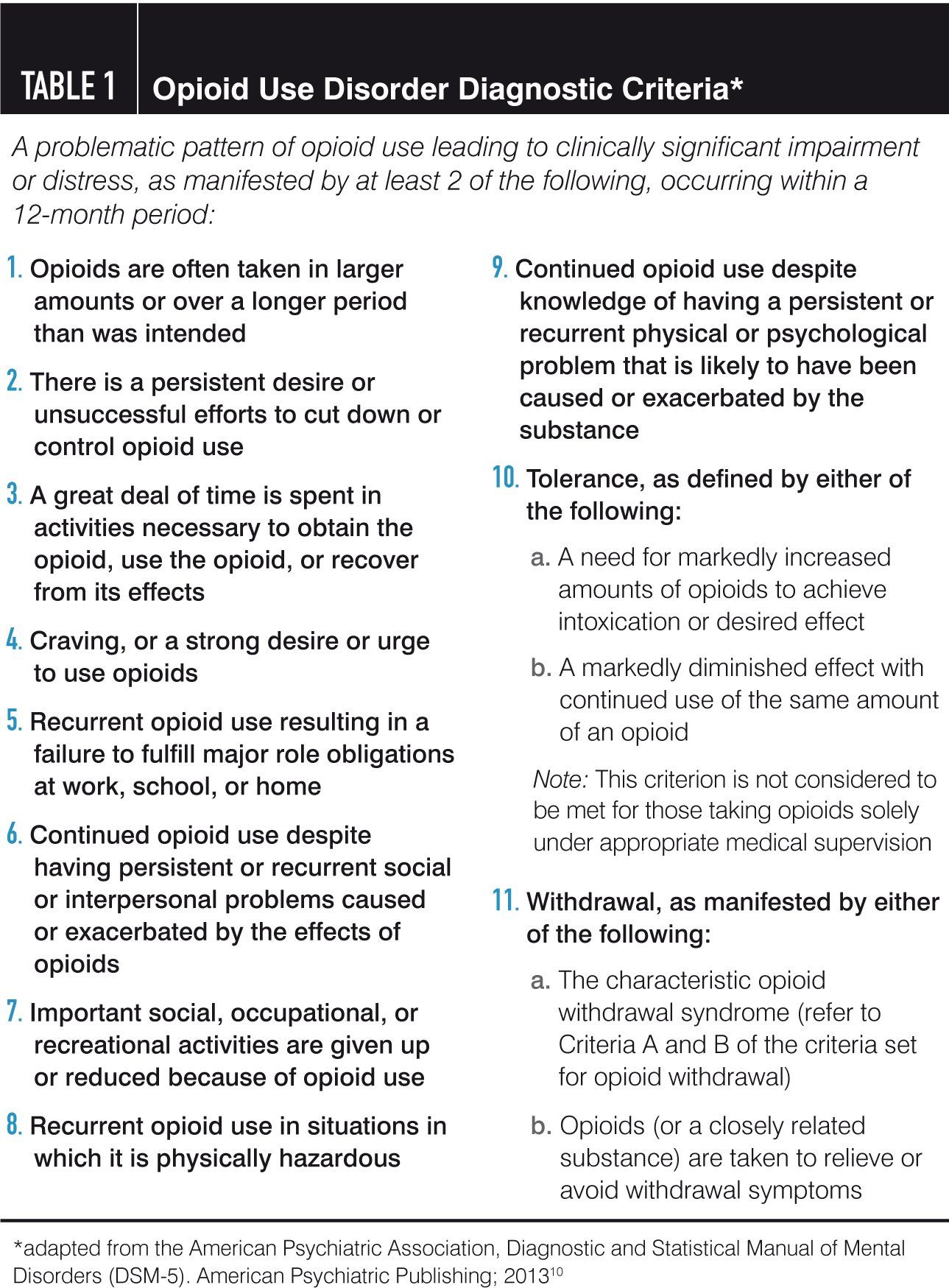OUD diagnostic criteria
If a patient exhibits at least two of these 11 behaviors, it may signal a problematic pattern of opioid use leading to clinically significant impairment or distress.

Clinical colleagues in psychiatry have given us a new definition, framework and context for assessment of OUD with the publication of the Diagnostics and Statistical Manual 5 (DSM-5) in 2013.1 The longstanding model and language of substance abuse and dependence have been largely replaced by a single disorder along a continuum of mild to severe. The current language used to describe a substance problem was updated to reflect changing patterns of abuse. Criteria were changed to better account for cultural and socioeconomic effects on populations.
Treatment for OUD in pregnancy must include a multifaceted, comprehensive approach as behavioral interventions, psychosocial support and medication administration have been shown to improve maternal and neonatal outcomes.2 Pharmacotherapy for treatment of OUD (referred to as medication-assisted therapy [MAT]) has been utilized in pregnancy since the 1970s.3,4 Initially this was achieved with methadone and later with buprenorphine-based products. The benefits of MAT use in pregnancy stem from avoidance of symptomatic withdrawal. When cyclic use and withdrawal from illicitly obtained opioids is controlled, patients have the opportunity to establish and maintain medical and prenatal care and to address comorbid conditions. This reduction in medical and social risks associated with substance use in pregnancy leads to improved social, obstetric, and neonatal outcomes.5
For more information: The opioid crisis: Prenatal and postnatal care
References:
- American Psychiatric Association: Diagnostic and Statistical Manual of Mental Disorders, Fifth Edition. Arlington, VA, American Psychiatric Association, 2013.
- Winklbaur B, Kopf N, Ebner N, Jung E, Thau K, Fischer G. Treating pregnant women dependent on opioids is not the same as treating pregnancy and opioid dependence: a knowledge synthesis for better treatment for women and neonates. Addiction 2008;103:1429-40
- Kosten TR, George TP. The Neurobiology of Opioid Dependence: Implications for Treatment. Science & Practice Perspectives. 2002;1(1):13-20.
- NIH National Institute on Drug Abuse. Medications to treat opioid addiction. https://www.drugabuse.gov/publications/research-reports/medications-to-treat-opioid-addiction/overview. Accessed 1/18/2018.
- Jones HE, Martin PR, Heil SH et al. Treatment of opioid-dependent pregnant women: clinical and research issues. J Subst Abuse Treat. 2008 Oct;35(3):245-59.
